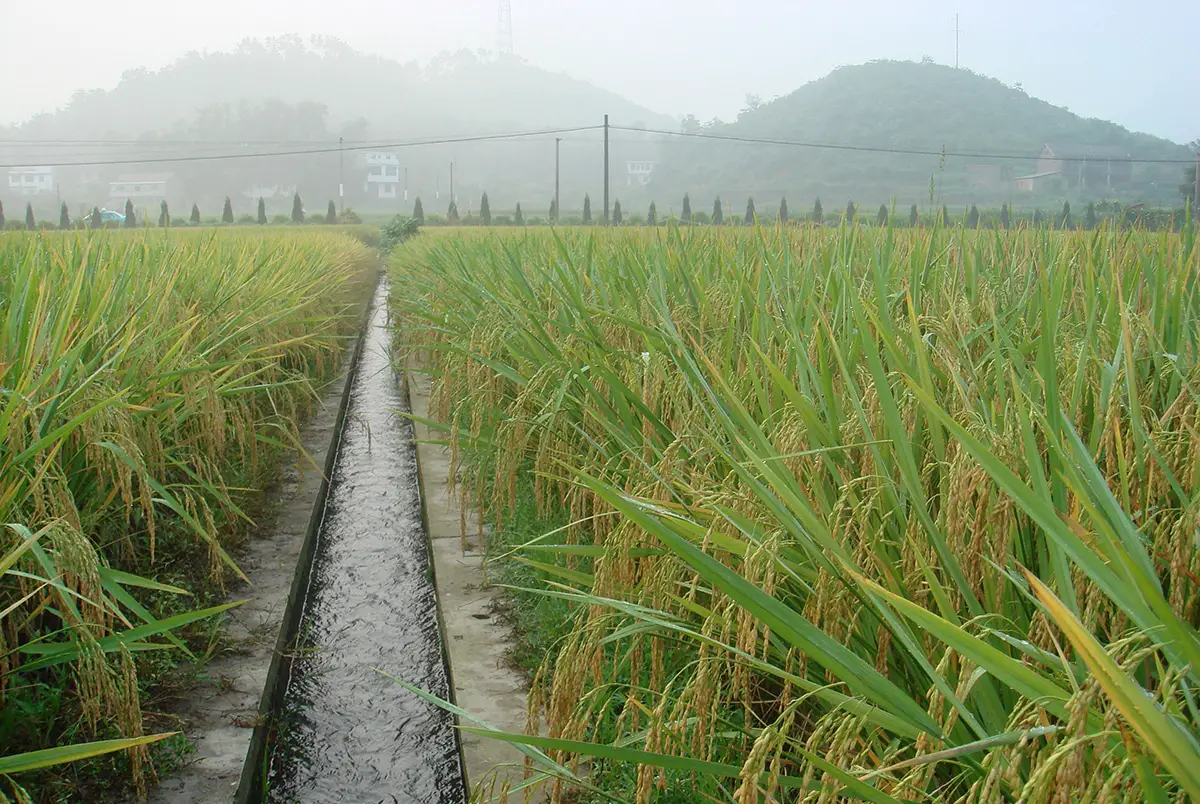

Flood irrigation is one of the oldest and simplest irrigation methods in existence. Since ancient times, farmers have used this technique to irrigate their crops, taking advantage of the natural flooding of rivers and streams to moisten their lands. Today it is still used in many parts of the world, especially in rural areas and in specific crops such as rice.
Although it may seem like an outdated irrigation method, flood irrigation still offers some advantages over more modern methods, especially in areas with low water resources. The purpose of this article is to explain in detail what is flood irrigation, what are its advantages and disadvantages, which crops are irrigated with this method and how its efficiency can be improved.
What is flood irrigation?


When we talk about flood irrigation, we refer to an irrigation method in which water is applied to an agricultural plot. temporarily flooding the ground. This technique is commonly used in areas where water is abundant and cheap, and where the terrain is relatively flat.
To apply flood irrigation a system of channels or furrows in the ground that are filled with water is used. The water is held in the field for a set period of time, usually several hours, until the soil absorbs enough water and the moisture is evenly distributed in the root zone of the plants. The water is then drained and sent back to the water source.
Advantages and disadvantages
Flood irrigation has some advantages and disadvantages that are important to consider when deciding which irrigation method to use. These are some of the pros of this technique:
- Es easy and cheap to implement, especially on relatively flat terrain.
- requires little maintenance and manpower.
- Es efficient in terms of water use, since the water is applied directly to the soil and its loss through evaporation is avoided.
- You can provide a uniform distribution of the water on the ground.
- It can be used for a variety of crops, including rice, alfalfa, sugar cane, and others.
However, one must take into account the Disadvantages of this irrigation system. They are the following:
- Could be inappropriate For land with steep slopes or soils that do not drain well.
- It can cause the accumulation of salts in the soil. This can damage plants and reduce productivity.
- Could be difficult to control the amount of water which applies. Consequently, over or under application may occur.
- Can contribute to water pollution and the spread of plant diseases. This is because the water used to flood the field may contain pathogens and other contaminants.
- May require the use of large amounts of water. This fact may not be sustainable in areas with water scarcity or where water is expensive.
What crops are irrigated by flooding?


This irrigation method can be used to various crops. The most common are the following:
- Rice: It is a crop that adapts very well to flood irrigation, since it needs a very humid environment to grow properly. See file.
- Sugar cane: It is commonly irrigated by flooding, especially in areas with clayey soils. See file.
- Alfalfa: It is another crop that can be irrigated with this method, as its deep root system can access water left in the soil after the water has drained. See file.
- Beans: They are a crop that is also commonly irrigated by flooding, especially in areas where water is plentiful and the soil has a good water-holding capacity. See file.
- Corn: Maize is also a crop that can be irrigated with this method, especially in areas with clayey soils that retain water well. See file.
- Green leafy vegetables: Many leafy greens, such as lettuce, spinach, and kale, can be flood irrigated. However, care is important to avoid the spread of pathogens through irrigation water.
In general, flood irrigation is more suitable for crops than They tolerate moisture in the soil and are not negatively affected by the accumulation of salts.
How to make flood irrigation more efficient?
To make flood irrigation more efficient, it is important Consider some important aspects. Here are some strategies that can be used:


Related article:
How to choose the irrigation system for my garden
- Control the amount of water applied: It can be done through the use of irrigation channels that allow adjusting the amount of water that flows in the field, as well as through the use of flow and pressure measurement systems.
- Keep the floor in good condition: Well-prepared soil that is level and free of weeds and other obstacles can help ensure that water is distributed evenly across the field. Also, if it has a good structure it can allow better absorption and retention of water.
- Avoid water loss: By avoiding excess water we will not lose as much in water runoff and in unwanted areas. Containment booms can also be used to ensure that the water stays in the desired area.
- Control water quality: Poor quality water can negatively affect plant growth and crop productivity. Water quality tests can be carried out to determine its salinity content, pH and other parameters.
- Use Complementary Irrigation Practices: To improve the efficiency of flood irrigation, supplemental irrigation practices such as drip irrigation, overhead irrigation, and other irrigation methods can be used. Using these irrigation methods can help reduce the amount of water needed to irrigate the field, and can also help reduce salt buildup in the soil.
As you can see, flood irrigation is a system that has many aspects to take into account. Choosing the best method depends on the terrain and the type of crop we have.

One thought on “What is flood irrigation?”